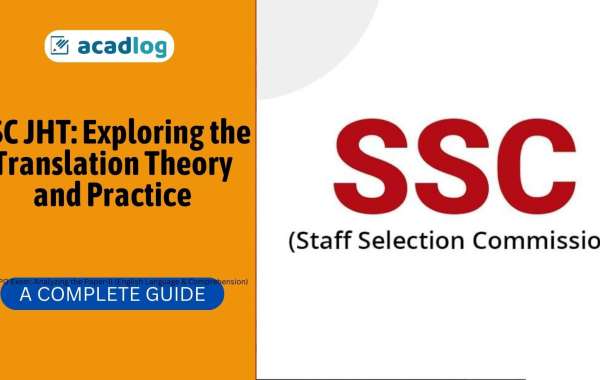The Staff Selection Commission Junior Hindi Translator (SSC JHT) exam is a significant opportunity for candidates proficient in Hindi and English languages. A crucial part of this exam is the translation theory and practice, which tests the candidates' ability to accurately and effectively translate texts between these two languages. This article delves into the key aspects of translation theory and practice, essential for excelling in the SSC JHT exam.
Understanding Translation in SSC JHT
The SSC JHT exam assesses the candidate's translation skills, including their understanding of the nuances of both source and target languages, cultural contexts, and the ability to maintain the integrity of the original text while translating.
Key Components of Translation Theory and Practice
1. Linguistic Proficiency
- Language Command: Strong command over both Hindi and English languages, including grammar, vocabulary, and idiomatic expressions.
- Contextual Usage: Ability to understand and appropriately use language in different contexts.
2. Cultural Understanding
- Cultural Nuances: Awareness of cultural nuances and idiomatic expressions unique to both languages.
- Contextual Relevance: Ability to maintain the cultural relevance of the text during translation.
3. Translation Techniques
- Direct and Indirect Translation: Understanding when to use direct translation and when to adapt the text to fit the cultural and linguistic context.
- Consistency and Coherence: Maintaining consistency and coherence in the translated text.
4. Practice with Diverse Texts
- Varied Materials: Practice translating a variety of texts, including technical, legal, administrative, and literary documents.
- Accuracy and Fluency: Focus on achieving both accuracy in conveying the original meaning and fluency in the translated text.
5. Understanding Translation Theories
- Theoretical Knowledge: Familiarize yourself with basic translation theories and their application in practical translation.
- Application in Practice: Apply theoretical knowledge to enhance translation quality.
Preparation Strategies
1. Regular Reading and Writing
- Bilingual Reading: Regularly read both Hindi and English materials to enhance language skills.
- Writing Practice: Practice writing in both languages to improve expression and accuracy.
2. Translation Exercises
- Regular Practice: Engage in regular translation exercises, gradually increasing the complexity of the texts.
- Feedback and Improvement: Seek feedback on your translations and work on areas of improvement.
3. Mock Tests
- Simulated Exam Conditions: Take mock tests under exam-like conditions to build speed and efficiency.
- Analysis of Performance: Analyze your performance in these tests to identify strong and weak areas.
4. Time Management
- Effective Time Allocation: Learn to allocate time effectively between reading, understanding, and translating the text.
- Speed and Accuracy Balance: Balance the speed of translation with accuracy and quality.
Final Words
Translation theory and practice in the SSC JHT exam require a blend of linguistic proficiency, cultural understanding, and practical translation skills. Aspirants should focus on enhancing their language skills, understanding translation theories, and practicing with diverse texts. Regular practice, coupled with effective preparation strategies, can significantly improve translation skills, essential for success in the SSC JHT exam.
Read more on Acadlog and Acadlog.in




